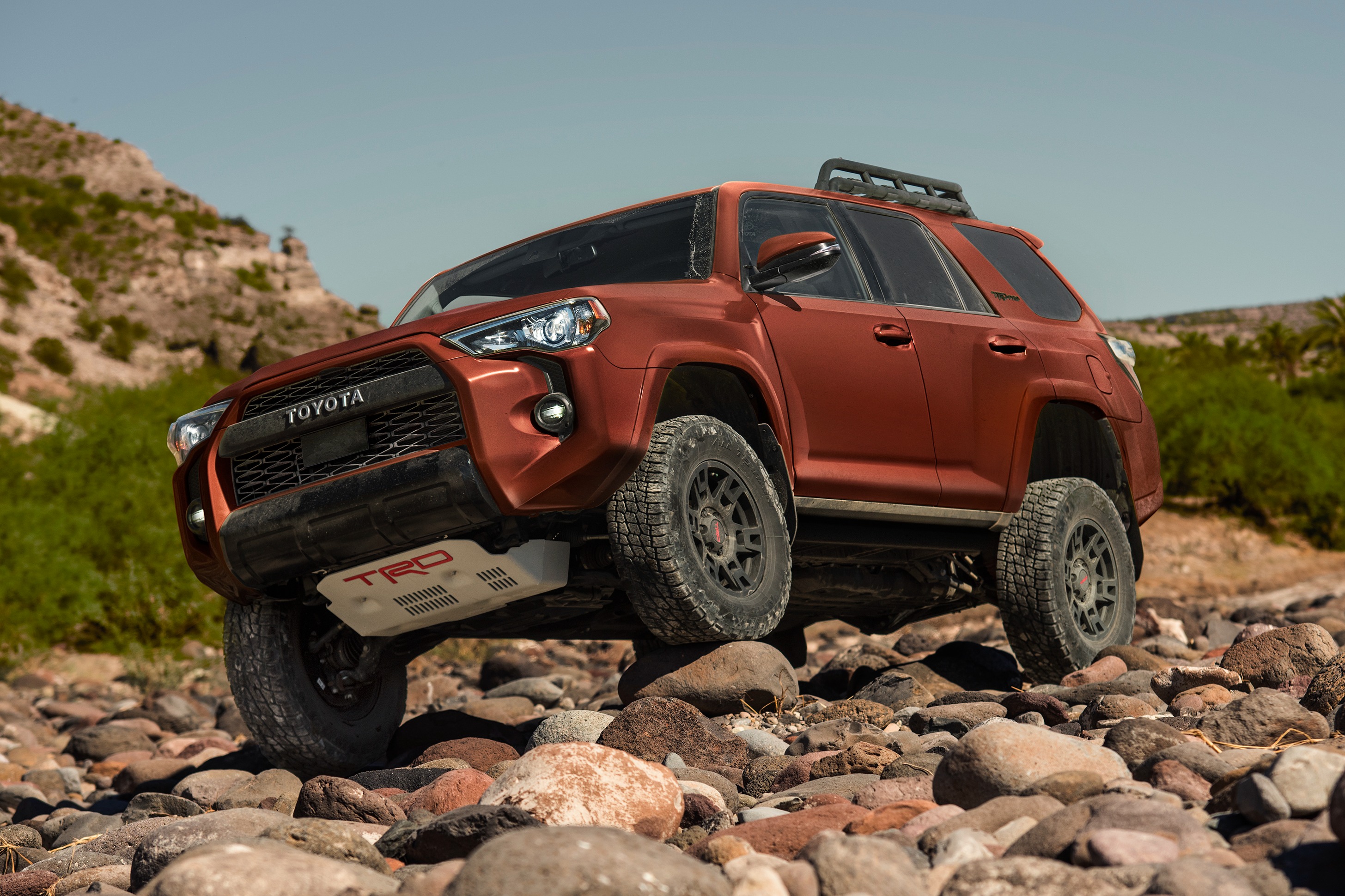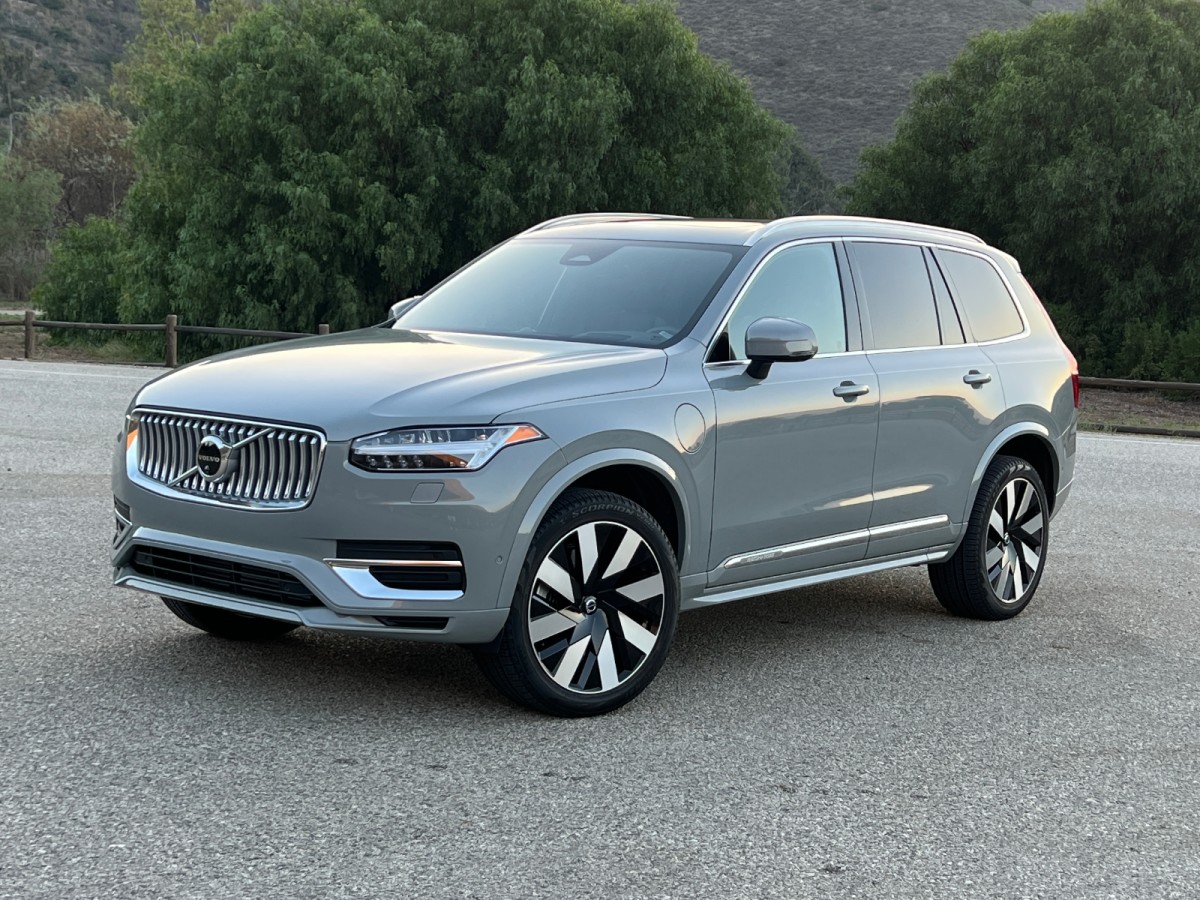Toyota 4Runner vs Volvo XC90
Overview | |
Years produced1984-Present | Years produced2003-2014 |
MSRP$41,270 | MSRP$57,400 |
Listings9392 | Listings9635 |
Ratings & Reviews | |
User Reviews | User Reviews |
Expert reviews7.7 out of 10 | Expert reviews8.3 out of 10 |
Pros
Cons
| Pros
Cons
|
Reviews SummaryAfter a very long 15 years, we finally got a new Toyota 4Runner with more capabilities, power, comfort, and technology. It's also more efficient thanks to a new hybrid option and more composed on pavement, but it remains a solid all-terrain vehicle to extend your adventures further. Verdict: Toyota doesn't throw out the fomula with its newly redesigned 4Runner. Instead, the 2025 model keeps many of the features shoppers have loved for over a decade, while also adding a more contemporary selection of four-cylinder powertrains. | |
Reviews SummaryVolvo has had plenty of news this year, most recently with the introduction of the all-new, fully electric 2025 EX90. But that doesn’t mean the automaker is content to let its stalwart top sellers run on autopilot. The second-generation XC90 gets its second substantial refresh for the 2025 model year. It’s still offered in Core, Plus, and Ultra trims and with a choice of mild-hybrid and plug-in hybrid powertrains, but Volvo has upped the ante. The midsize three-row gets updated styling, materials, and feature offerings, as well as some mechanical tweaks that aim to improve ride comfort and handling. We had the opportunity to experience the T8 and the B5 powertrains, both in Ultra trim, on a Volvo drive program in Europe. Verdict: The Volvo XC90 was already quite a good vehicle. It’s earned its position as Volvo’s flagship SUV with oft-praised style and substance. For 2025, it has been made even better. | |
No video found | |
Popular Features & Specs | |
Engine | Engine2.0L 247 hp I4 |
Drive Train | Drive TrainAWD |
Seating Capacity7 | Seating Capacity7 |
Horsepower | Horsepower247 hp @ 5400 rpm |
MPG City | MPG City23 |
MPG Highway | MPG Highway30 |
Engine | |
Engine Name2.4L 278 hp I4 | Engine Name2.0L 247 hp I4 |
Torque317 lb-ft @ 1700 rpm | Torque266 lb-ft @ 2000 rpm |
Horsepower278 hp @ 6000 rpm | Horsepower247 hp @ 5400 rpm |
Drivetrain4X2 | DrivetrainAWD |
Fuel Economy | |
MPG City | MPG City23 |
MPG Highway | MPG Highway30 |
Interior | |
Seating Capacity7 | Seating Capacity7 |
Key Features | |
Navigation System | Navigation SystemStandard |
Sunroof/Moonroof | Sunroof/MoonroofStandard |
Safety | |
Front Crash Overall | Front Crash Overall5 |
Side Crash Overall | Side Crash Overall5 |
Dimensions & Capacity | |
Cargo Space48.4 cu ft | Cargo Space10.7 cu ft |
Curb Weight4455 lbs | Curb Weight4589 lbs |
Height72.6 in | Height69.9 in |
Length194.9 in | Length195.0 in |
Width78.0 in | Width84.3 in |
Wheelbase112.2 in | Wheelbase117.5 in |
Maximum Payload895 lbs | Maximum Payload1160 lbs |
Number of doors4 | Number of doors4 |
Maximum Towing Capacity6000 lbs | Maximum Towing Capacity5000 lbs |
Standard Towing Capacity6000 lbs | Standard Towing Capacity |
Overview | ||
Years produced | 1984-Present | 2003-2014 |
MSRP | $41,270 | $57,400 |
Listings | ||
Ratings & Reviews | ||
User reviews | ||
Expert reviews | 7.7 out of 10Read full review | 8.3 out of 10Read full review |
Pros & cons | Pros
Cons
| Pros
Cons
|
Summary | After a very long 15 years, we finally got a new Toyota 4Runner with more capabilities, power, comfort, and technology. It's also more efficient thanks to a new hybrid option and more composed on pavement, but it remains a solid all-terrain vehicle to extend your adventures further. Verdict: Toyota doesn't throw out the fomula with its newly redesigned 4Runner. Instead, the 2025 model keeps many of the features shoppers have loved for over a decade, while also adding a more contemporary selection of four-cylinder powertrains. | Volvo has had plenty of news this year, most recently with the introduction of the all-new, fully electric 2025 EX90. But that doesn’t mean the automaker is content to let its stalwart top sellers run on autopilot. The second-generation XC90 gets its second substantial refresh for the 2025 model year. It’s still offered in Core, Plus, and Ultra trims and with a choice of mild-hybrid and plug-in hybrid powertrains, but Volvo has upped the ante. The midsize three-row gets updated styling, materials, and feature offerings, as well as some mechanical tweaks that aim to improve ride comfort and handling. We had the opportunity to experience the T8 and the B5 powertrains, both in Ultra trim, on a Volvo drive program in Europe. Verdict: The Volvo XC90 was already quite a good vehicle. It’s earned its position as Volvo’s flagship SUV with oft-praised style and substance. For 2025, it has been made even better. |
Video | No video found | |
Popular Features & Specs | ||
Engine | 2.0L 247 hp I4 | |
Drive Train | AWD | |
Seating Capacity | 7 | 7 |
Horsepower | 247 hp @ 5400 rpm | |
MPG City | 23 | |
MPG Highway | 30 | |
Engine | ||
Engine Name | 2.4L 278 hp I4 | 2.0L 247 hp I4 |
Torque | 317 lb-ft @ 1700 rpm | 266 lb-ft @ 2000 rpm |
Horsepower | 278 hp @ 6000 rpm | 247 hp @ 5400 rpm |
Drivetrain | 4X2 | AWD |
Fuel Economy | ||
MPG City | 23 | |
MPG Highway | 30 | |
Interior | ||
Seating Capacity | 7 | 7 |
Key Features | ||
Navigation System | Standard | |
Sunroof/Moonroof | Standard | |
Safety | ||
Front Crash Overall | 5 | |
Side Crash Overall | 5 | |
Dimensions & Capacity | ||
Cargo Space | 48.4 cu ft | 10.7 cu ft |
Curb Weight | 4455 lbs | 4589 lbs |
Height | 72.6 in | 69.9 in |
Length | 194.9 in | 195.0 in |
Width | 78.0 in | 84.3 in |
Wheelbase | 112.2 in | 117.5 in |
Maximum Payload | 895 lbs | 1160 lbs |
Number of doors | 4 | 4 |
Maximum Towing Capacity | 6000 lbs | 5000 lbs |
Standard Towing Capacity | 6000 lbs | |

By: CarGurus + AI
At CarGurus, our team of experienced automotive writers remain at the heart of our content operation, conducting hands-on car tests and writing insightful guides that are backed by years of industry experience. To complement this, we are harnessing AI to make our content offering more diverse and more helpful to shoppers than ever. To achieve this, our AI systems are based exclusively on CarGurus content, ratings and data, so that what we produce is both unique to CarGurus, and uniquely helpful to car shoppers.






































